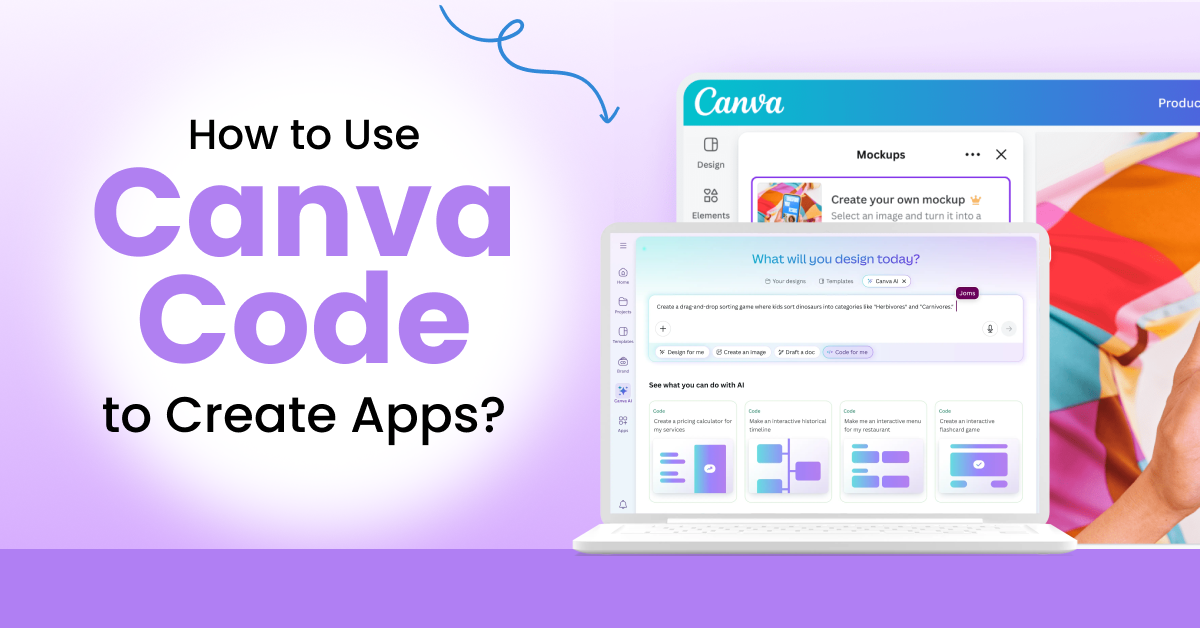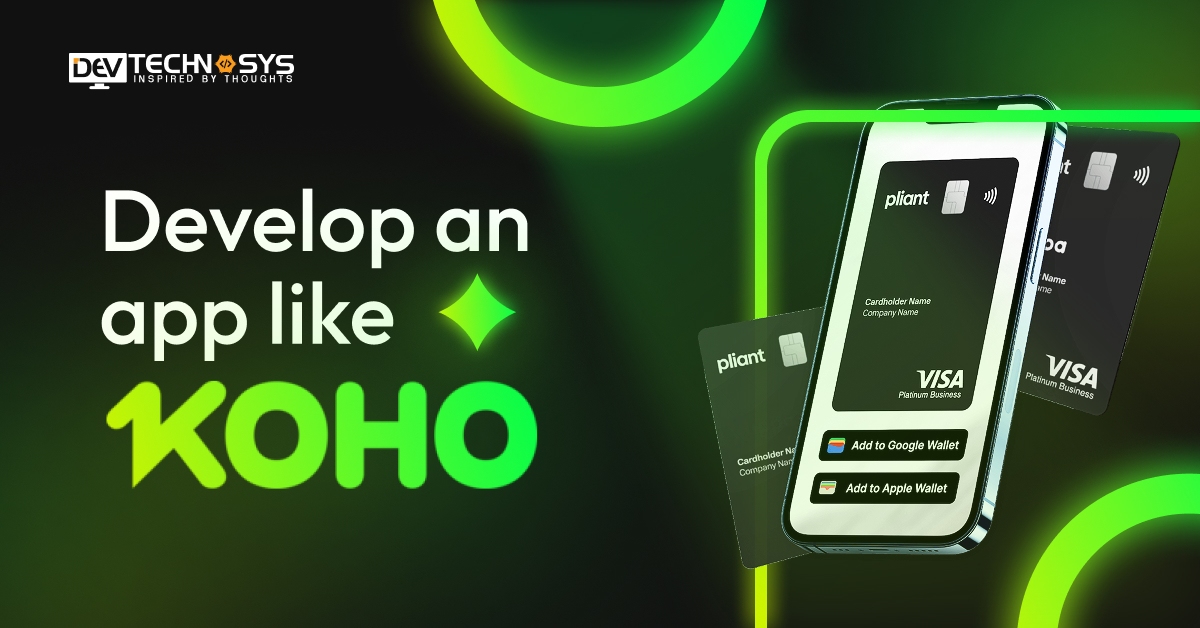Canva has revolutionized graphic design, putting powerful tools in the hands of millions. But what if you could do more than just design stunning visuals?
What if you could build interactive experiences, engaging tools, and even simple applications—all within the familiar Canva environment, and often without writing a single line of traditional code? That’s the power of Canva Code App Development, enabling creators to transform static designs into dynamic, functional digital products.
Enter Canva Code, a groundbreaking new feature that is transforming the design landscape. Announced at the Canva Create 2025 event on April 10, 2025, Canva Code is Canva’s answer to the growing demand for interactive content and custom digital tools.
With this feature, users can now use Canva Code to create apps effortlessly, making app creation accessible to everyone, from seasoned designers to complete novices.
What is Canva Code?
At its core, Canva Code is an AI-powered feature that allows users to generate functional HTML, CSS, and basic JavaScript code directly from text prompts. Think of it as a creative bridge between your design vision and a working interactive element or simple application.
Instead of needing to learn complex programming languages, you can simply describe what you want, and Canva’s AI will translate that into code that can be embedded within your mobile app development or even exported for external use.
This isn’t about building a full-fledged enterprise application. Rather, it’s about empowering you to create:
- Interactive widgets: Quizzes, calculators, flashcards, surveys, polls.
- Simple web-based tools: Basic to-do lists, daily planners, simple games.
- Personalized experiences: Interactive maps, product customizers, animated elements for landing pages.
- Educational resources: Learning modules, vocabulary builders, math games.
The beauty of Canva Code lies in its ability to bring your ideas to life with minimal technical barriers. You can now create apps with Canva Code, making it a game-changer for marketers, educators, small business owners, and anyone looking to add a layer of interactivity to their digital presence.
How Does Canva Code Work?
Canva for app development operates on a principle of intuitive prompting and instant visual feedback. Here’s a breakdown of the typical workflow when you use canva code to create apps and build interactive prototypes effortlessly:
1. Access Canva Code: After logging into your Canva account, navigate to the “Canva AI” section, where you’ll find the “Code for Me” option. This is your gateway to the interactive app creation experience.
2. Prompt Your Idea: The magic begins with a simple text prompt. Describe what you want your app or interactive element to do. For example:
-
- “Create a flashcard app for learning Spanish vocabulary.”
- “Build a tip calculator with input fields for bill amount and tip percentage.”
- “Design an interactive quiz about world capitals.”
- “Make a simple to-do list with checkboxes.”
3. Generate the Code: Once you’ve entered your prompt, hit the “Generate” button. Canva’s AI springs into action, rapidly processing your request and generating the underlying HTML, CSS, and JavaScript.
4. Live Preview and Refinement: Almost instantly, you’ll see a live preview of your generated app or widget. This is where the iterative design process truly shines. You can:
-
- Tweak your prompt: If the initial output isn’t quite right, refine your prompt to guide the AI towards your desired outcome.
- Adjust design elements: Within Canva for app development, you can often modify colors, fonts, and other visual aspects directly, seeing the changes reflected in real-time. This integrates the coding process seamlessly with Canva’s renowned design capabilities.
5. Publish, Embed, or Export: Once you’re satisfied with your creation, you have several options:
-
-
- Publish: Directly embed your interactive element into a Canva design, such as a presentation, website, or social media post.
- Embed: Generate embed code to integrate your app into external websites or platforms.
- Export: Download the raw HTML, CSS, and JavaScript files. This is particularly useful for users who want to take their creation further, customize it with more advanced coding, or host it on their own servers.
-
The Power of Accessibility
Canva Code reflects the reduction of the barriers to entry for app-making, making it accessible to a much broader audience than ever before. It was once the case that building an interactive tool, even in its simplest form, required at least a fundamental understanding of web development languages. For most, that was a steep learning curve.
Now, with resources like a Canva app creation tutorial, anyone — including small businesses can prototype custom solutions quickly and deploy them without hiring dedicated developers or spending months learning to code.
This accessibly has huge implications for:
- Educators: Creating interactive quizzes, vocabulary builders, educational games, collaborative learning modules, etc., enabling them to build an app like Canva for education personalizing the learning experience and engaging their learners.
- Marketers: Creating landing pages with interactivity that catches the eye, captures data and converts, like interactive product configurators or lead generation quizzes.
- Small Business Owners:Building custom calculators for quotes, appointment schedulers, complaint forms/feedback forms, or mini-CRMs, without the intervention of hundreds/thousands of dollars of development budget, is now easier when you use canva code to create apps.
- Content Creators: Adding interactivity to bloggers and those with articles, videos, and/or social media. formerly passive engagement, is now interactive engagement, often formative and memorializing experiences.
- Nonprofits And Community Organizers: Building simple registration forms, calendars of events, or interactive donation trackers quickly—without having to hire a developer or work through 1’s and 0’s—is now easier than ever when you use canva code to create apps, better engaging your community and meeting operational needs.”
Launch and Availability
Canva Code was officially unveiled at Canva Create 2025 on April 10, 2025. This marked a significant expansion of Canva’s offerings, moving beyond static design into the world of dynamic, interactive content.
Currently, Canva Code is integrated into the broader Canva platform, accessible through the Canva AI features. While there isn’t a separate “download” for Canva Code itself, access to it is part of the Canva for app development experience.
Some features may require Canva Pro subscriptions for full functionality or credit usage, depending on the scope and cost to build an app using its advanced design tools and integrations. Use canva code to create apps more efficiently and leverage these powerful features.
The Future of Design and Development
Canva Code is more than just a new feature; it’s a profound statement about the ongoing convergence of design and development. As AI continues to advance at an astonishing pace, we can expect even more sophisticated functionalities and deeper integrations.
This feature represents a major step toward no-code app development with Canva not just making coding easier, but making creation more intuitive, allowing ideas to manifest into tangible, interactive experiences with unprecedented speed and simplicity
While it’s important to understand that Canva Code is currently designed for simpler applications and interactive widgets, its potential to democratize app creation is immense.
With the ability to create a mobile app using Canva, it opens doors for countless individuals to turn their innovative ideas into functional realities, further solidifying Canva’s position as a truly all-encompassing creative platform.
Imagine a future where every designer is also a no-code developer, where interactive content is the norm, not the exception. Canva Code is paving the way for that future.
So, if you’ve ever dreamt of building a small app or adding interactive flair to your designs but felt intimidated by the complexities of code, now is the time to use canva code to create apps.
It’s an exciting new chapter in the world of design, and the possibilities are limited only by your imagination. Dive in and start building!





















